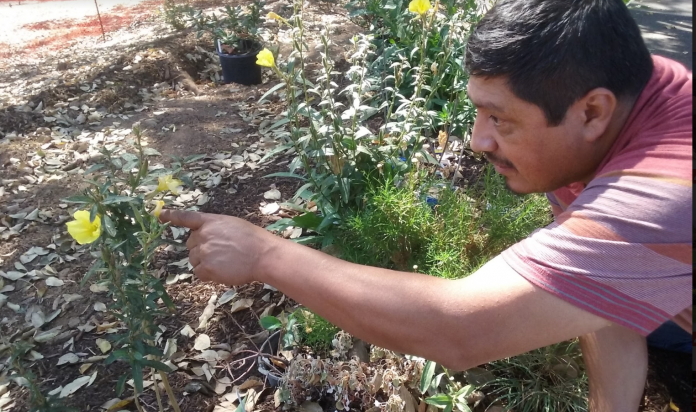
Gavilan College students will soon be able to learn outside in a specially designed classroom where rocks are chairs and the surrounding gardens are living, breathing, teaching tools, thanks to a federal STEM (science, technology, engineering and math) grant the school received.
“It’s nice to get away from the classroom,” said biology student, Alexis Miranda, 21, who spent her summer in the campus greenhouse where from seed, she propagated an assortment of native plants for the teaching garden.
“From water to land, we are creating an evolutionary path from the pond through the grassland to the native garden,” said biology instructor Reye Morales, who is leading the project that, when completed, will feature an outdoor classroom overlooking the campus pond, a native meadow and a network of gardens filled with native plants.
The project is funded by a STEM grant for $5.8 million.
The gardens, Morales said, were designed according to the various ecosystems at play in our state—wetlands, chaparral, grasslands, desert—and include about 100 plants that represent those biomes.
Gently touching the soft bristles of a California buckwheat, Morales described how students are able to use all their senses to learn about these hidden gems, some of which have been used for their medicinal properties by Native Americans for generations.
Pointing out a specimen of white salvia, a type of sage plant used by local indigenous communities, Morales said part of the ongoing identification and classification work is to create a cultural and natural history of the plants.
“We talk about the plant’s physiology and chemical defenses used to warn off predators,” said Morales, adding that everything from pesticides to medicines can be derived from the unassuming plants that surround us.
The project has also received community support, said Morales, from initial design to laying out, in concrete, tracks from elk, bear, bobcat and others animals native to the area.
Part of the initiative is to link the new outdoor classroom and gardens to the campus arboretum, the seeds of which were planted during the college’s founding more than 50 years ago by visionary landscaper and arborist Ray Williams.
Originally from Watsonville, Williams bred trees he thought would do well in Gilroy’s microclimate and planted many specimens from Australia, including a national champion tree, an Omeo Gum, which at 56 feet tall with a 69.25-foot canopy, is the biggest of its species in the nation.
“Williams was well ahead of his time,” said Morales. “He selected drought tolerant trees and really showcased different species of the eucalyptus. Schools give arborist workshops here on how to care for them.”
Visitors to the Gavilan campus are welcome to tour the arboretum. A map can be found here: http://bit.ly/2d72o4D.













